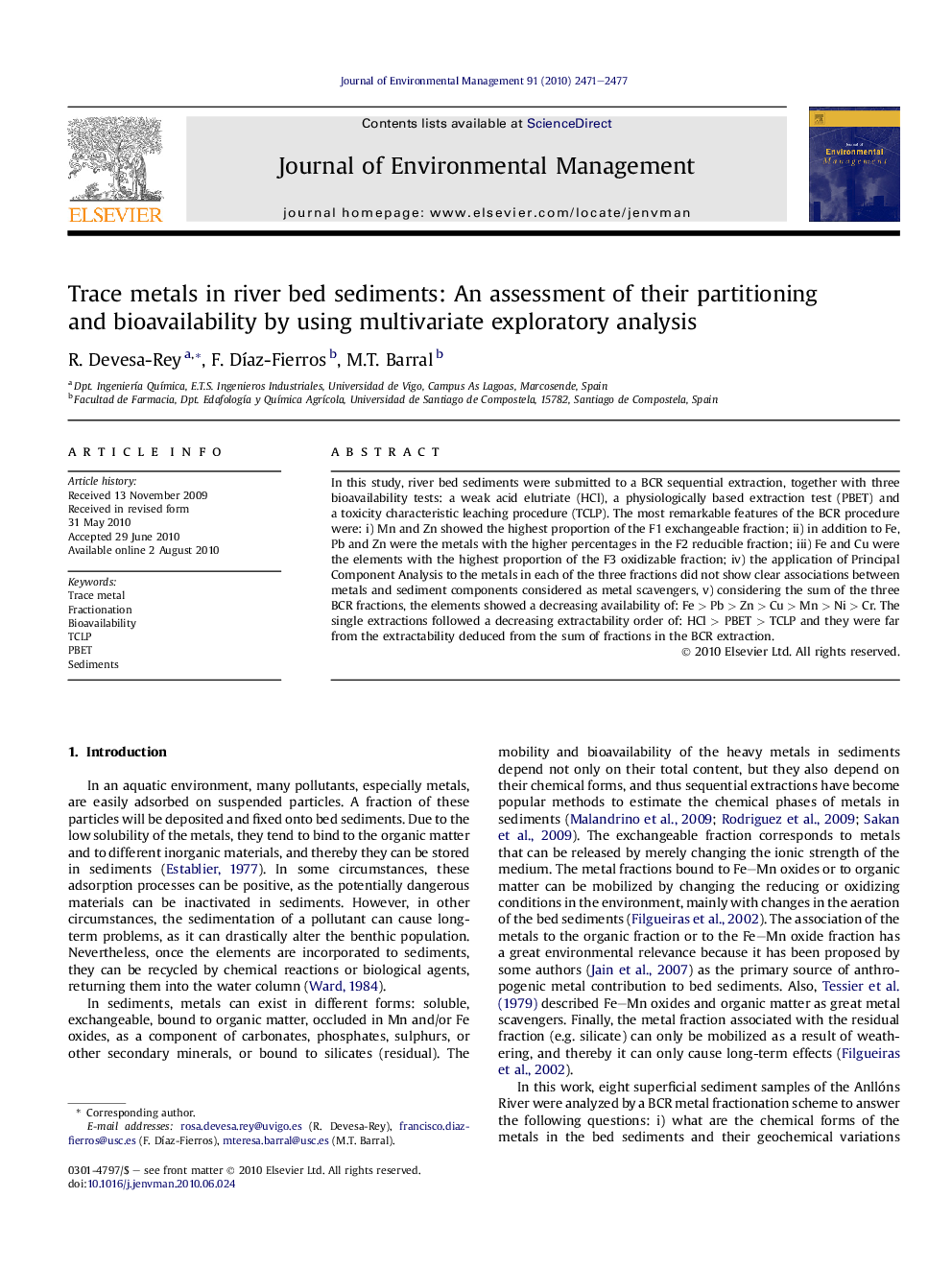| Article ID | Journal | Published Year | Pages | File Type |
|---|---|---|---|---|
| 1057550 | Journal of Environmental Management | 2010 | 7 Pages |
In this study, river bed sediments were submitted to a BCR sequential extraction, together with three bioavailability tests: a weak acid elutriate (HCl), a physiologically based extraction test (PBET) and a toxicity characteristic leaching procedure (TCLP). The most remarkable features of the BCR procedure were: i) Mn and Zn showed the highest proportion of the F1 exchangeable fraction; ii) in addition to Fe, Pb and Zn were the metals with the higher percentages in the F2 reducible fraction; iii) Fe and Cu were the elements with the highest proportion of the F3 oxidizable fraction; iv) the application of Principal Component Analysis to the metals in each of the three fractions did not show clear associations between metals and sediment components considered as metal scavengers, v) considering the sum of the three BCR fractions, the elements showed a decreasing availability of: Fe > Pb > Zn > Cu > Mn > Ni > Cr. The single extractions followed a decreasing extractability order of: HCl > PBET > TCLP and they were far from the extractability deduced from the sum of fractions in the BCR extraction.
